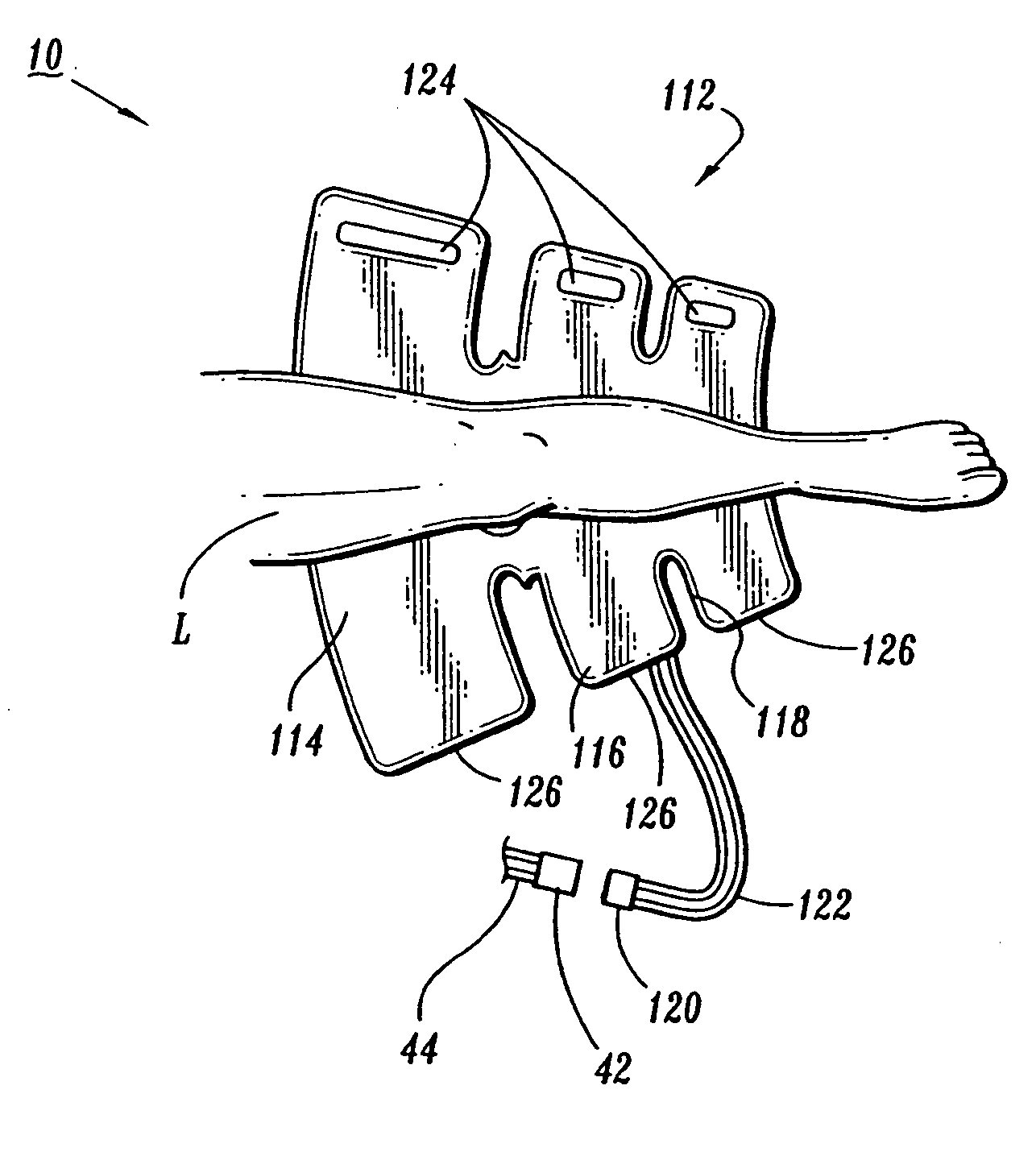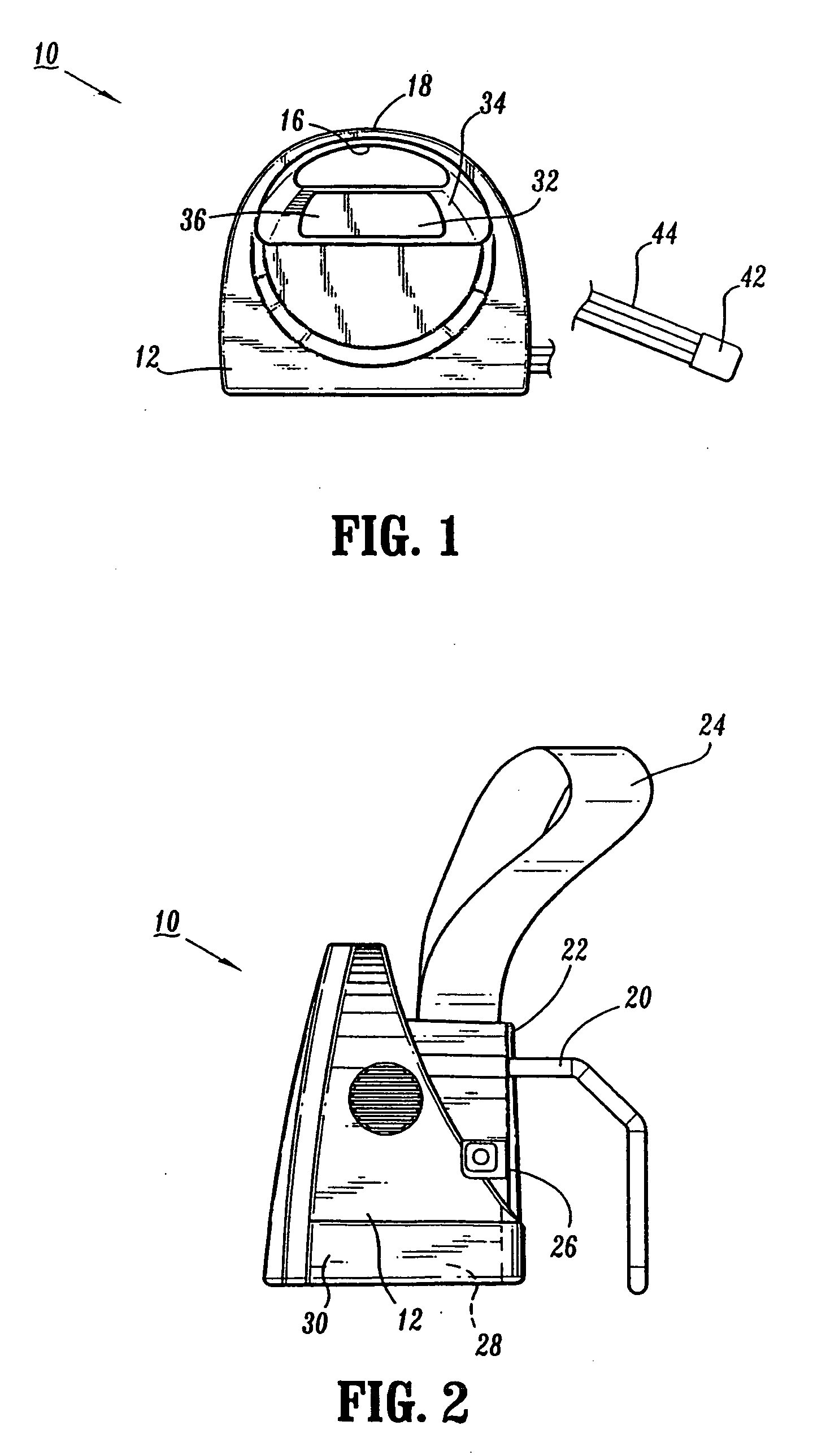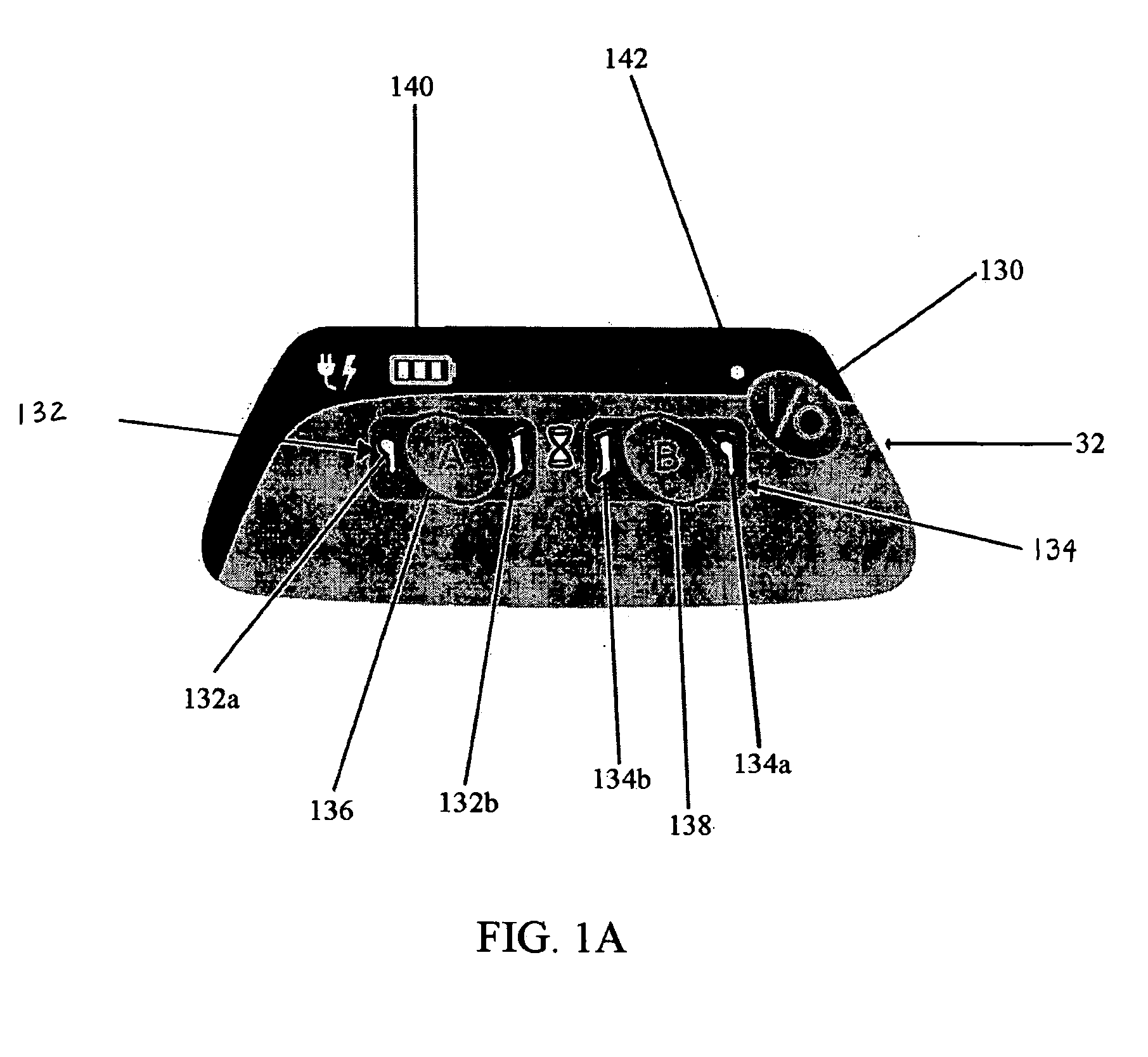Garment detection method and system for delivering compression treatment
a compression treatment and garment detection technology, applied in the field of vascular therapy, can solve the problems of life-threatening, blood accumulation or pooling, interference with cardiovascular circulation, etc., and achieve the effect of convenient and efficient fabrication and pressure monitoring
- Summary
- Abstract
- Description
- Claims
- Application Information
AI Technical Summary
Benefits of technology
Problems solved by technology
Method used
Image
Examples
Embodiment Construction
[0047] The exemplary embodiments of the compression treatment system and methods of operation disclosed are discussed in terms of vascular therapy including a prophylaxis compression apparatus for application to a limb of a body and more particularly in terms of a compression treatment system having a controller that is adaptable for inflating thigh, calf, ankle and foot sleeves and accommodates patient transport and mobility. In particular, the compression treatment system includes a controller, interconnecting tubing, and at least one inflatable garment. The controller includes a pressure transducer, a manifold, and at least one output port adapted for fluidly coupling the controller to the at least one inflatable garment using the interconnecting tubing. The at least one inflatable garment includes at least one inflatable bladder. It is contemplated that the compression treatment system may be employed for preventing and overcoming the risks associated with patient immobility. It...
PUM
 Login to View More
Login to View More Abstract
Description
Claims
Application Information
 Login to View More
Login to View More - R&D
- Intellectual Property
- Life Sciences
- Materials
- Tech Scout
- Unparalleled Data Quality
- Higher Quality Content
- 60% Fewer Hallucinations
Browse by: Latest US Patents, China's latest patents, Technical Efficacy Thesaurus, Application Domain, Technology Topic, Popular Technical Reports.
© 2025 PatSnap. All rights reserved.Legal|Privacy policy|Modern Slavery Act Transparency Statement|Sitemap|About US| Contact US: help@patsnap.com



